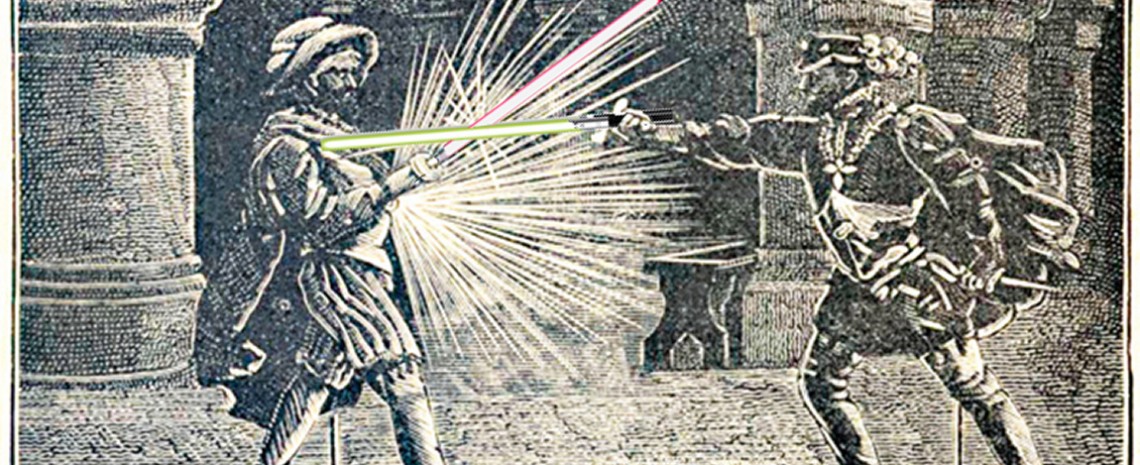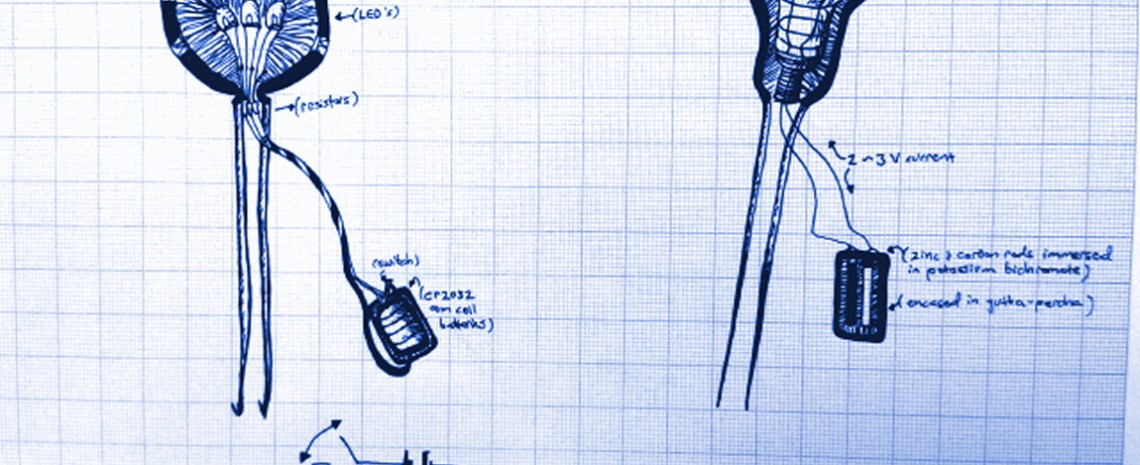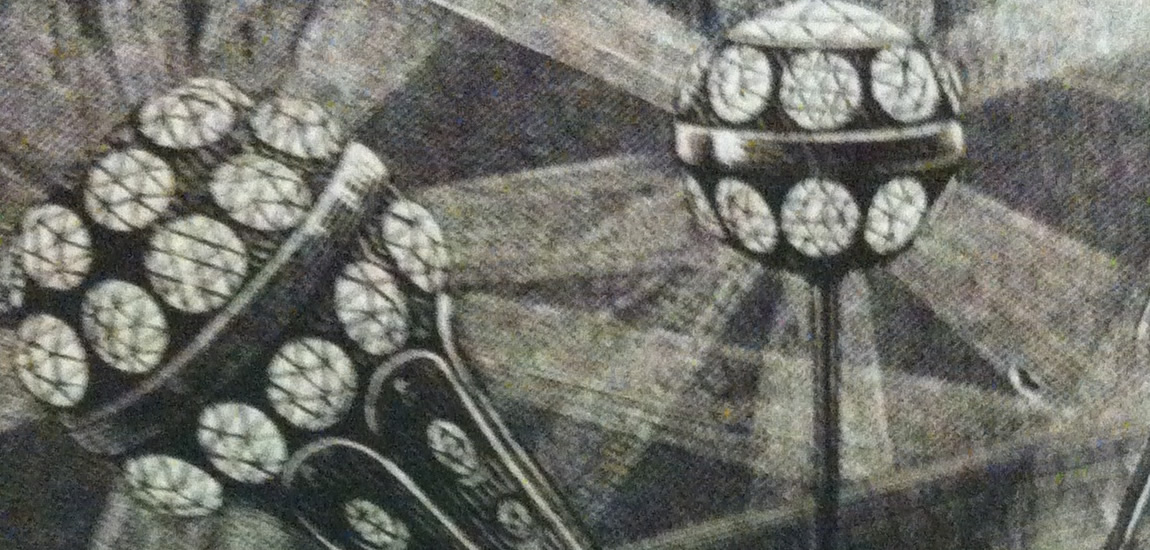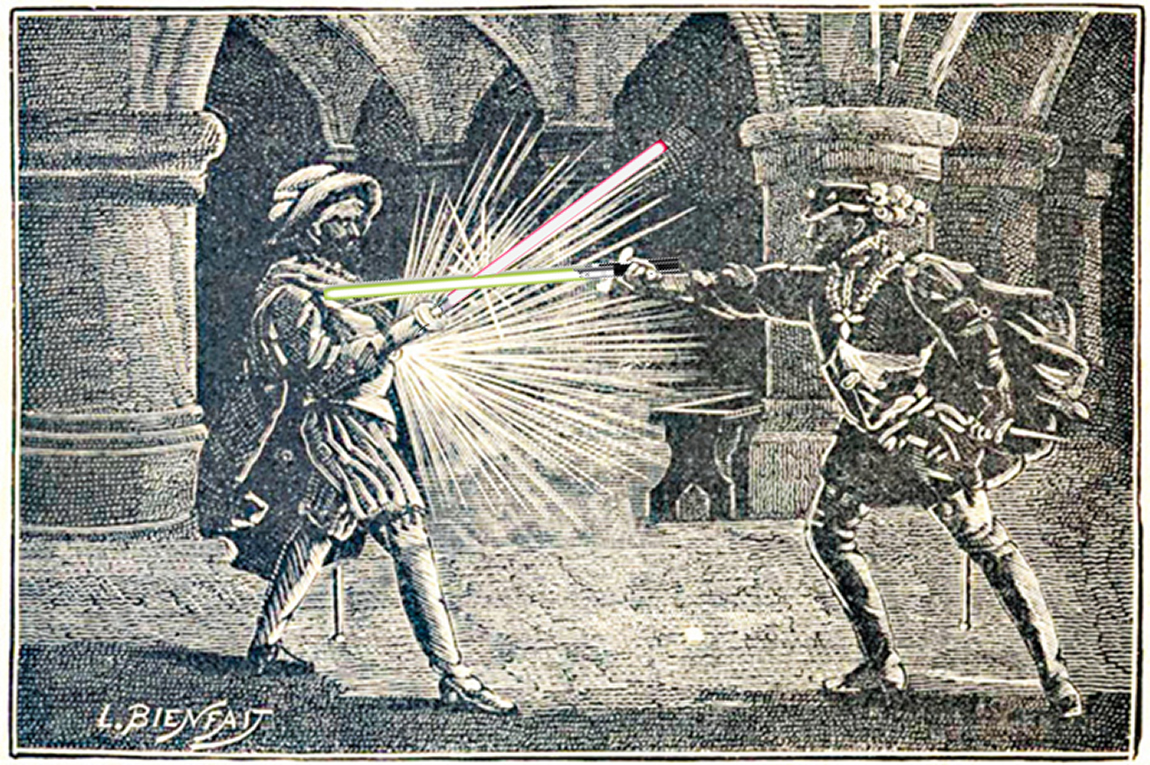While researching and developing the lab’s kits for cultural history, I have realized why the choice of physical materials is so important to the reconstruction of old technologies and historical mechanisms, such as Gustave Trouvé’s “electric jewels” (pictured below), which are part of our early wearables kit.
Specifically, I have noticed tensions between arguments—on the one hand—for reproduction, feasibility, and ease and—on the other—for replication, fidelity, and authenticity. These tensions boil down to what I feel are two key claims nested in the debate:
The claim for frozen moments: The practice of replication suggests a kind of frozen moment in cultural history. By replicating a historical mechanism exactly as it was, the cultural context is presumably preserved. Of course, such replication is at once difficult and expensive (e.g., outdated materials live up to their reputation of being both hard to find and out of use), and—perhaps more importantly—it is difficult (if not impossible) for many scholars to accept the very premise of the frozen moment. After all, no matter how much attention we pay to material particulars, we cannot live, see, or hear like they did back then. Still, affording audiences an immersive experience that would manifest through the use of legitimate parts seems central to the aims of our kits, if not the aims of historical materialism.
The claim against warping history: By reconstructing a historical mechanism through modern electronics, we are making the assumption that feasible reproductions override authentic replications, opening ourselves to accusations of radical subjectivism. For instance, consider Gustave Trouvé’s light-up sword (an image of which is doctored below). “Modernizing” or “resituating” this mechanism could involve anything from a few coin-cell batteries and some LEDs in a pyrex tube, to the configuration of a bona fide light sabre. One advantage of using convenient means to reconstruct the sword is the low-cost creation of multiple iterations (or versions) of the sword that rely on the materials we have at hand. However, the actual mechanism in question can be irrevocably warped and torn from its historical context.
In other fields and practices, we see similar tensions. No matter how hard they try, chefs will never be able to cook a shepherd’s pie exactly like someone else. And yet they continue to make new pies inspired by, say, local or family tradition. Elsewhere, no matter how hard they try, a Zeppelin cover band will never play “Stairway to Heaven” just like Zeppelin did. So they adapt, revise, or resituate it, in homage to the original. In other words, when things are made, they are integrated into a current cultural fabric, such as it is. Covers, if you will, employ the tones, progressions, and arrangements that ring both current and well, as people see fit for a given context.
That said, I feel that usability and translation are major components in the direction of the kits for cultural history, including our early wearables kit. In order to follow this line of inquiry, I will make a few assumptions about the kits’ content. First, the kits’ audiences likely consist of a smörgåsbord of students, curators, professors, and general enthusiasts. This variety presents two important touchstones necessary to the kits’ success: 1) the content must communicate material history by prompting hands-on engagement and assembly, and 2) in effect, addressing a broad audience means we must attend to the wider cultural narrative at play. Were the kit purely for media studies scholars or curators at memory institutions, the case would be different. Addressing the wider cultural narrative, then, means we must build with change in mind. What materials came before our kits? What materials grew from or came after them? What materials have been ignored? What materials are ambiguous about their very relation to truth or authenticity?
Even if we avoid including critical essays about the materials and practices at hand, we are still constructing and conveying a critical argument simply by creating a kit. Since the founding notion of these kits is to use them as a vehicle for scholarly inquiry and argumentation, then their composition and components carry a weight that shapes claims and thesis statements.
Shepherd’s pie, “Stairway to Heaven,” and light sabres aside, the very assumption that the kits for cultural history are premised solely on recreation is thus flawed. Instead, with unavoidable bias, we are prompting a hands-on understanding, which should augment (or even complicate) the historical documents we have at our disposal. In so doing, we are changing history as we interpret it. For example, in the following schematic, our rendition of Trouve’s light-up hairpin is shown next to Trouvé’s own design. Both renditions can be explained and exhibited, but the building occurs in our current cultural moment.
Post by Zaqir Virani, attached to the KitsForCulture category, with the physcomp tag. Images courtesy of Zaqir Virani and Classic Boat (pre-doctored image of Trouvé’s swords in Faust).






Pingback: Maker Lab in the Humanities » University of Victoria » Kits for Cultural History()